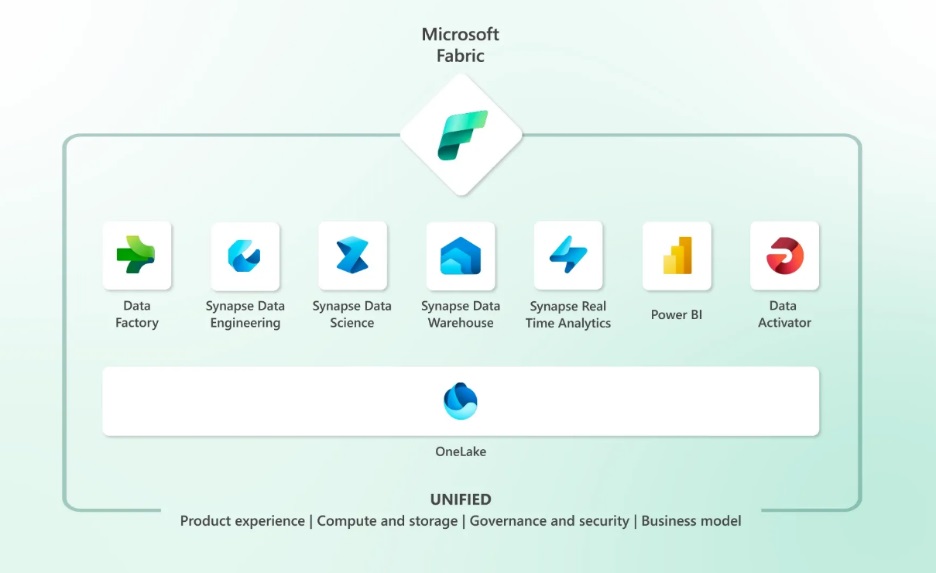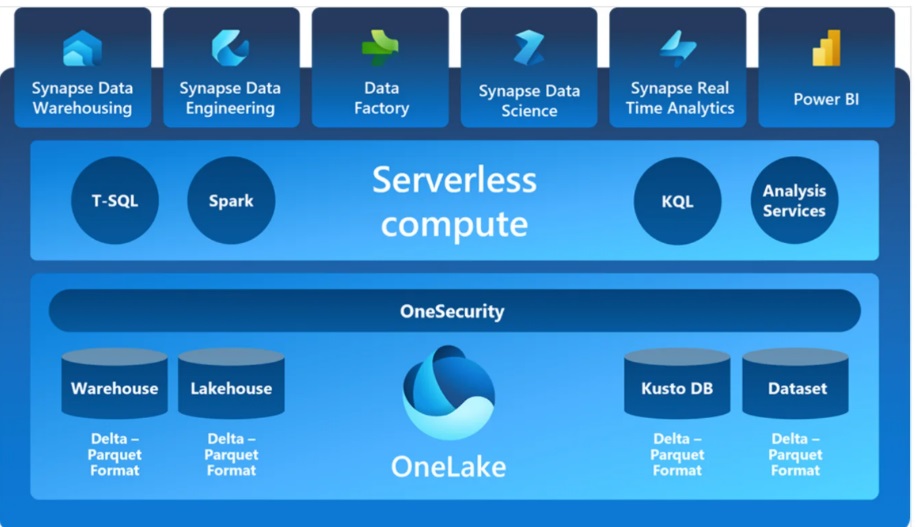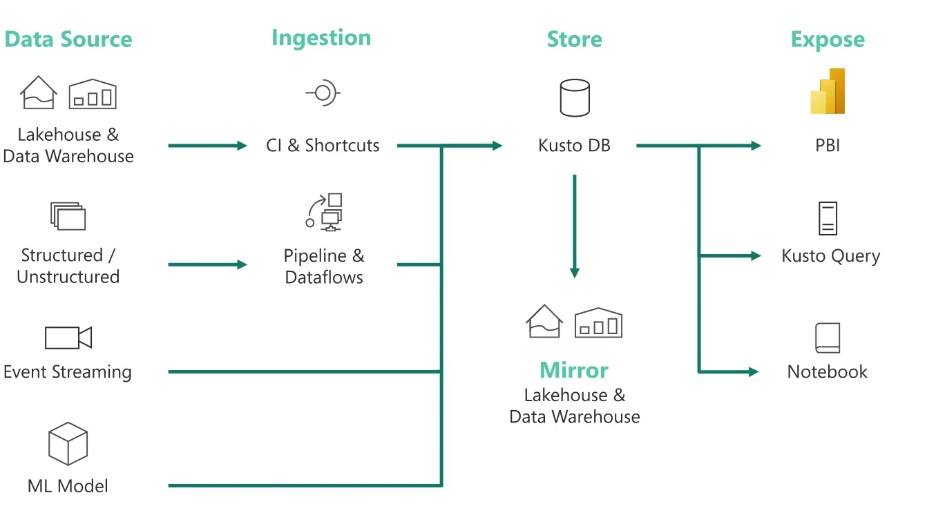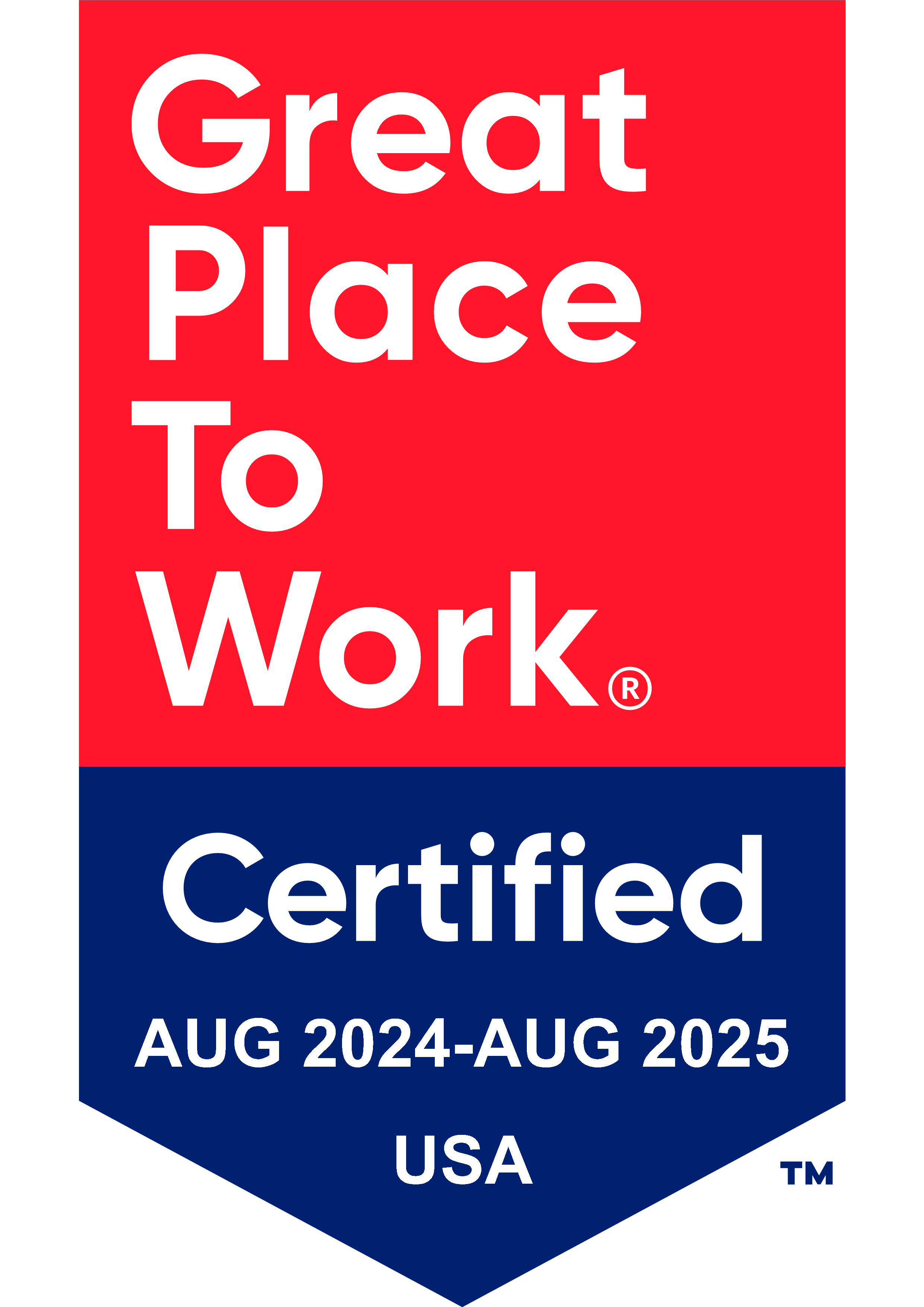In the era of data-driven decision-making, organizations are grappling with the ever-increasing volume, velocity, and variety of data. To effectively harness this data and extract meaningful insights, successful companies need a comprehensive data analytics platform that can connect, manage, and analyze data across the enterprise. Microsoft Fabric emerges as a powerful solution, providing a unified platform that streamlines data operations and empowers leaders to drive business transformation.
This blog explores the key features of Microsoft Fabric involving OneLake and various workloads present on the platform. The blog also covers key updates and benefits of the Microsoft unified analytics platform.
What to Explore
Overview of Microsoft Fabric
Microsoft Fabric is an AI-powered analytics platform that integrates the best of Microsoft’s data and analytics tools, including Azure Data Factory, Azure Synapse Analytics, and Power BI. It offers a unified experience that enables organizations to seamlessly connect, prepare, analyze, and visualize data. Fabric allows users across the organization to leverage the abilities of generative AI while working with data. It helps improve your operational efficiency, productivity, business expansion and product innovation.
Figure: Microsoft Fabric
Source: Microsoft Fabric documentation
Key Components of Microsoft Fabric
OneLake
Fabric introduces OneLake, a revolutionary built-in SaaS multi-cloud data lake in which workloads are automatically connected to a central, unified storage unit, just like OneDrive integrating effortlessly with Microsoft 365 applications.
Figure: OneLake
Source: Microsoft Fabric documentation
OneLake eliminates the need for individual teams to create their own data silos, freeing them from the shackles of disorganized data storage. Instead, it provides a single source of truth, making data discovery and sharing a breeze. No more hunting through scattered repositories – the data you need is readily available, empowering collaboration and innovation across your entire organization.
Here’s how OneLake helps you:
- Maximize the potential of data: Break down data silos and unlock hidden insights with a unified view of all your information.
- Simplifies data discovery and sharing: Access and share data with ease, fostering collaboration and accelerating innovation.
- Eliminates data duplication and vendor lock-in: Store your data in a secure, cloud-agnostic platform, free from proprietary formats and vendor restrictions.
- Empowers teams with self-service BI and analytics: Provide your team with the tools and resources they need to analyze data and make informed decisions on their own.
With OneLake, data management becomes effortless, leaving you free to focus on what truly matters – extracting valuable insights and driving business success. Microsoft Fabric enables data experts to efficiently store, ingest, store, process and assess data in a unified platform.
Power BI
A cornerstone of Microsoft Fabric, Power BI enables users to transform raw data into captivating visualizations, providing a clear and intuitive way to explore and understand complex datasets. With its rich array of charts, graphs, and maps, Power BI empowers business users, analysts, and data scientists alike to uncover hidden patterns, trends, and anomalies within the data.
Figure: A real-time analytics use case with Microsoft Fabric
Source: Microsoft Fabric documentation
Data Factory
This tool tackles the complexities of data integration, seamlessly connecting disparate data sources across the enterprise. This powerful tool automates data ingestion, transformation, and movement, ensuring that data is consistently available for analysis and decision-making.
Data Activator
This helps organizations by taking data-driven automation to the next level. By monitoring data streams for predefined patterns and thresholds, Data Activator triggers automated actions, such as sending notifications, updating dashboards, or even initiating workflows, ensuring that critical insights are acted upon promptly.
Synapse Data Engineering
It empowers organizations to create and manage a lakehouse, a unified data repository that stores both structured and unstructured data in its native format. Leveraging the power of Apache Spark, Synapse Data Engineering enables data engineers to transform and prepare data for analysis and sharing, ensuring that the right data is available to the right people at the right time.
Synapse Data Science
This facilitates data scientists with a comprehensive environment for exploring, modeling, and deploying machine learning solutions. With its integrated notebooks, vast libraries, and scalable compute resources, it can extract predictive insights from data, empowering businesses to make data-driven decisions that anticipate future trends and opportunities.
Synapse Data Warehouse
It provides a secure, open-data-format SQL warehouse that scales efficiently to handle petabytes of data. With its high performance and flexibility, Synapse Data Warehouse enables organizations to store, analyze, and share complex datasets, supporting a wide range of business intelligence and analytics applications.
Synapse Real-Time Analytics
Analytics empowers organizations to ingest, transform, and query data streams from various sources, ranging from gigabytes to petabytes, at lightning speed. This real-time data processing capability enables businesses to gain immediate insights from their data, allowing them to make informed decisions and respond to changing conditions in real-time.
Key Benefits of Microsoft Fabric
Microsoft data fabric offers a myriad of benefits for organizations, enabling them to:
- Unify Data Management: Consolidate data from disparate sources into a single, centralized repository, eliminating data silos and ensuring data consistency.
- Streamline Data Preparation: Automate data ingestion, transformation, and cleansing processes, reducing manual effort and improving data quality.
- Empower Data Analysts: Provide data analysts with a self-service platform for data exploration and analysis, enabling them to quickly generate insights.
- Drive Data-Driven Decision-Making: Facilitate data sharing and collaboration across departments, fostering a data-driven culture and enabling informed decisions.
Microsoft Fabric and AI
Copilot is recognized as the AI assistant that helps programmers write codes with the use of Modern AI and large language models. The users can handle complex cognitive tasks effectively. Microsoft has been planning to build an ecosystem of copilots with plugins. These plugins will be useful for tools by enabling them to interact with other services and software. The objective of this is to make developers independent by enabling them to build their copilots. The main strength of Copilot in Microsoft Fabric includes AI-assisted help, personalization, machine learning, personalization and understanding of human language.
According to Microsoft: “With Copilot in Microsoft Fabric in every data experience, users can use conversational language to create dataflows and data pipelines, generate code and entire functions, build machine learning models, or visualize results.”
Best Practices to Maximize Microsoft Fabric’s Potential
To fully leverage the capabilities of Fabric’s AI-powered analytics platform, organizations can adopt the following best practices:
- Establish a Clear Data Strategy: Define a clear data strategy aligned with business objectives to guide data initiatives and ensure that data investments align with business goals.
- Emphasize Data Governance: Implement robust data governance policies to ensure data quality, security, and compliance.
- Foster Data Literacy: Educate employees on data concepts and provide training on using data analytics tools to empower data-driven decision-making at all levels.
- Promote Data Collaboration: Encourage collaboration between data teams and business units to break down silos and foster a shared understanding of data-driven insights.
- Embrace Continuous Improvement: Continuously evaluate and refine data processes and tools to ensure that data strategies remain relevant and effective.
Adopting Fabric in Hybrid and Multi-Cloud Environments
While the benefits of Fabric are compelling for unifying your organization’s data in a platform purpose-built for advanced analytics and AI, the reality is that most organizations have hybrid and multi-cloud environments that can complicate the pathway to adoption of Fabric.
For example, organizations with on-premise databases and ETL processing need a strategy for modernizing those workloads when implementing a Fabric solution. Data modernization has been a key trend for several years now, yet many organizations still have significant on-premise database footprints in systems like SQL Server, Oracle, Teradata and Netezza and ETL in tools like SSIS, DataStage, Ab Initio and Informatica PowerCenter.
Likewise, organizations with cloud data warehouses in Snowflake or Databricks need to decide whether to integrate those with Fabric or migrate to Fabric. As Fabric builds more robust functionality into the platform, adopting a “Better Together” solution with Azure Databricks and Fabric could be an option to keep complex processing in Databricks while running core workloads in Fabric.
Working with a Microsoft Solutions Partner can help explore the possible options and identify the optimal data strategy for your specific environment. Specialized partners can even assist in the migration process with unique solutions like automated ETL migration to accelerate the modernization of on-premise workflows to Fabric.
Conclusion
With proper strategy, planning and best practices, organizations can effectively utilize Microsoft Fabric to transform their organizations into data-driven enterprises, unlocking new possibilities for innovation and growth. Microsoft unified analytics platform empowers organizations to become strategic partners in driving business success, enabling them to harness the power of data to make informed decisions and optimize operations.
Ready to unlock the true potential of your data? Let Bitwise, an experienced Microsoft partner, provide an independent perspective on Microsoft Fabric to guide you on your advanced analytics and AI journey. Get in touch today and discover how we can help you leverage Fabric and transform your data into a powerhouse of growth.
You Might Also Like

Data Security
Implementing Fine-Grained Data Access Control: A Complete Guide to GCP Column-Level Policy Tags
Learn More













